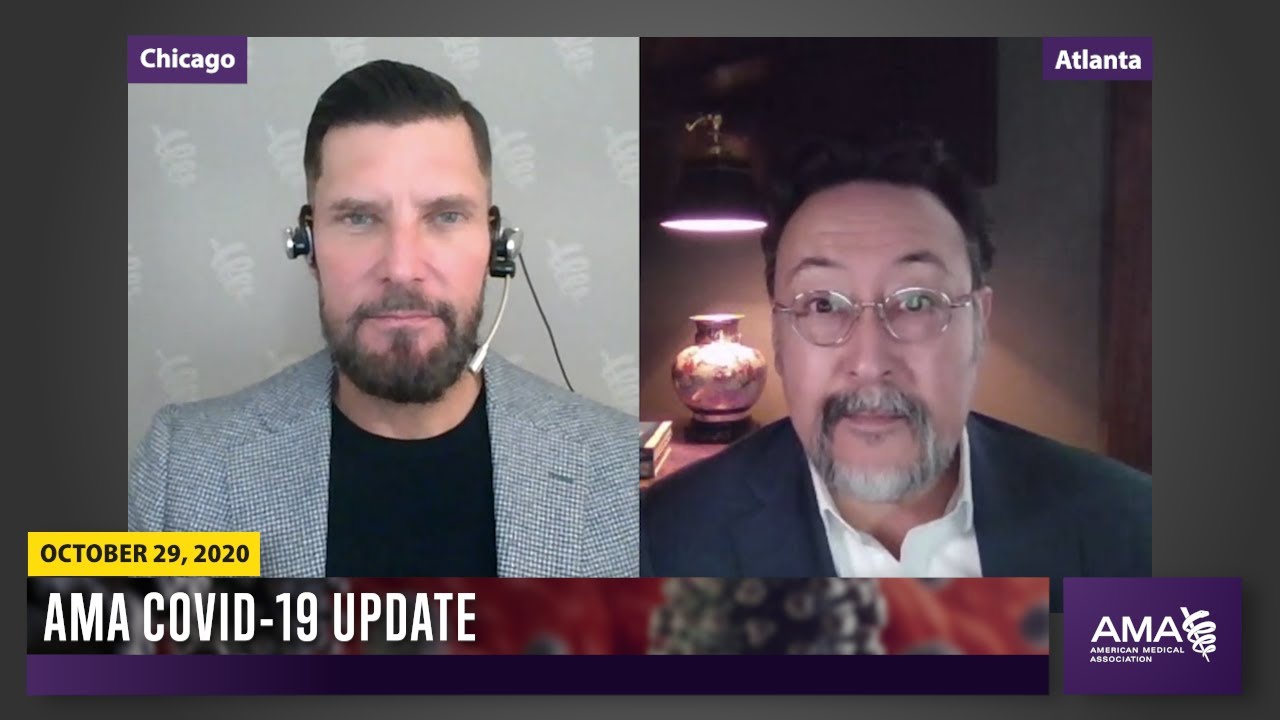Every day during this COVID-19 pandemic, physicians and other health professionals go to work knowing there is a risk they may be infected with a deadly disease. The Centers for Disease Control and Prevention (CDC) is partnering with the AMA on Project Firstline, a new national infection-control training program to lower that risk.
The threat is real. Health care workers account for at least 6% of COVID-19 related hospitalizations, according to an analysis of data collected early in the pandemic from 13 sites in 13 states.
The median age of the hospitalized health care workers was 49, and 27.5% were admitted to an intensive care unit, 5.8% of them required mechanical ventilation, and 4.2% died in the hospital, according to the study, “COVID-19–Associated Hospitalizations Among Health Care Personnel—COVID-NET, 13 States, March 1–May 31, 2020,” published in the CDC’s Morbidity and Mortality Weekly Report.
These findings highlight “the need for continued infection prevention and control in health care settings as well as community mitigation efforts to reduce transmission,” the report states.
Project Firstline is a collaborative effort involving the CDC, AMA, state and local health departments, medical and public health associations, health care organizations and academic institutions. It provides front-line health care workers with the training they need to protect themselves, their families, and their communities from infectious-disease threats.
Mike Bell, MD, deputy director of the CDC’s healthcare quality promotion division, talked about Project Firstline with AMA President Susan R. Bailey, MD, during the third installment of an AMA-hosted webinar series for physicians addressing various aspects of the federal government’s COVID-19 response.
“We don’t have a specific, highly effective antiviral treatment, and we don’t have an effective vaccine yet, so that means that there’s a large proportion of people who could become very sick without recourse to treatment,” Dr. Bell said. “When something is severe and not treatable, we are concerned.”
Dr. Bell also discussed the intent of Project Firstline and the challenge of reaching as wide an audience as possible while a pandemic makes in-person meetings unwise during a recent episode of the “AMA COVID-19 Update.”
“Our goal here is to saturate the waterfront of health care with infection-control understanding,” Dr. Bell told Dr. Bailey the webinar.
Project Firstline materials will include a series of town hall discussions and online training modules detailing infection-control practices and strategies and the science and reasoning behind them. The modules will soon be available on the AMA Ed Hub™.
Matters of time
Dr. Bailey, an allergist and immunologist in Fort Worth, Texas, posed questions to Dr. Bell that were submitted by the webinar audience. Many of his answers were highly nuanced, reflecting the complexity of the knowledge base that’s emerging about SARS-CoV-2.
For example, when asked whether there is any validity to limiting time spent in a room with a patient, Dr. Bell replied “absolutely.” But, he then noted, it also depends on how much “infectious material” the patient was generating, environmental factors such as the size and air flow of the space involved, and whether there were any mitigation factors such as the patient and clinician wearing masks.
While 15 minutes is generally viewed as safe exposure, that’s not always the case.
“It’s not as though you can breathe up to 14.99 minutes and then—once you cross the threshold—you become infected,” Dr. Bell said. “That’s not how it works.”
When the N95’s a must
Dr. Bell said the CDC’s recommendations on face coverings are “tiered” and reflect the condition of the patient and an institution or practice’s supply of personal protective equipment (PPE).
“We’re painfully aware of the supply-chain challenges that many facilities and institutions are facing,” Dr. Bell said. “This is a very frustrating situation.”
N95s are recommended when performing aerosol-generating procedures, or when taking care of a patient who is known or suspected to have COVID-19. Surgical masks for routine care with a patient that you don’t think has COVID-19 should be fine, he said.
But, Dr. Bell added, if a community’s infection rate is rising, more caution may be required.
Constant vigilance required
Dr. Bell noted that there has been a tendency for health care workers to focus on safety around patients and then let their guard down among other physicians, nurses or health professionals.
“We’re seeing a great deal of transmission within health care between colleagues,” he said. “We’re seeing it in break rooms. We’re seeing it in hallways—you name it.”




